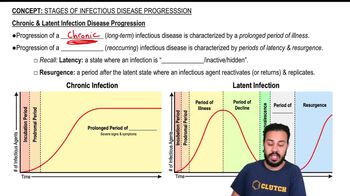If the following are placed in the order of occurrence, which would be the third step?
a. diapedesis
b. digestion
c. formation of a phagosome
d. formation of a phagolysosome
e. margination
 Tortora 14th Edition
Tortora 14th Edition Ch. 16 - Innate Immunity: Nonspecific Defenses of the Host
Ch. 16 - Innate Immunity: Nonspecific Defenses of the Host Problem 16.5a
Problem 16.5a Verified step by step guidance
Verified step by step guidance



If the following are placed in the order of occurrence, which would be the third step?
a. diapedesis
b. digestion
c. formation of a phagosome
d. formation of a phagolysosome
e. margination
How can the complement system cause endotoxic shock?
If the following are placed in the order of occurrence, which would be the third step?
a. activation of C5 through C9
b. cell lysis
c. antigen–antibody reaction
d. activation of C3
e. activation of C2 through C4
Why does hemolysis of red blood cells occur when a person receives a transfusion of the wrong type of blood?
A decrease in the production of C3 would result in
a. increased susceptibility to infection.
b. increased numbers of white blood cells.
c. increased phagocytosis.
d. activation of C5 through C9.
e. none of the above
Give several examples of how microbes evade the complement system.